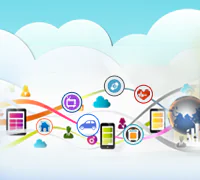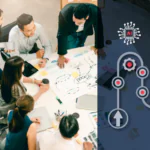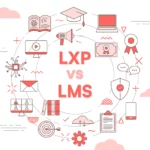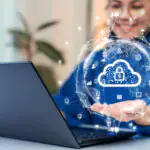
At the digital technology trade fair CeBIT 2014 in Hannover, David Cameroon, The Prime Minister of United Kingdom, announced that 45million pounds would be made available for research in internet of things in the UK. While this announcement signals the growing interest of IoT in governments and state bodies, enterprises have already made some big leaps in this space.
The ecosystem under Internet of Things offers many opportunities for players including but not limited to Chip manufacturers, Network operators, M2M service providers, Cloud computing, Data analytics and App developers.
According to Gartner Internet of things will result in $1.9 trillion in global economic value add on by 2020, through sales into diverse end markets.
Orchestrating all the varied aspects in Internet of Things to communicate and work together requires deploying software that enables varied devices to communicate with each other and the system they are part of. Software plays a compelling role in enabling the features and capabilities required to support IoT. Thus for IoT to be commercially viable and conform to its expectations, a convergence of Mobility, Big data and Cloud technologies is essential.
Let us have a look at the role the tech triad mentioned above will play in Internet of Things:
Mobility:
Mobile app industry has evolved at a rapid pace and with a plethora of more miniscule smart devices, sensors, controllers etc. being connected, demand for applications that can be used to control, track and monitor these devices, would be immense.
These apps would act/serve as a bridge between the IOT objects and the user by providing a comprehensive easy to use user interface to furnish an augmented user experience.
Seeing the already developed applications especially in Home automation, it has become increasingly evident that the IoT devices become more useful and valuable when they are complimented with companion apps for mobile devices like smartphones, tablets and wearable’s.
Currently organizations active in IoT services are providing pre-developed app with the device, now with this methodology consumers would have an individual lighting app, HVAC app, garage app etc. This would overwhelm the user, not to mention the diversity in the platforms and operating systems utilized to develop such smart devices.
With smart devices set to grow exponentially, manufacturers need to create interoperable devices and developers should develop apps which can provide the user with control over all the devices in his house, car, building etc.
Big Data Analytics
When you have billions of devices connected and generating data at a rapid pace, real-time analytics is of the essence. Traditional ETL based data analytics systems would simply not be able to sustain the volume, velocity and the variety of the incoming data streams.
Enterprise have to look towards newer methodologies and technologies like Hadoop, cluster computing and in-memory computing , which can reduce processing time of data from hours to seconds and provide actionable intelligence to users and devices.
Also attempts are being made to enable local processing of data at the sensor level, for applications where latency is a concern and processing has to be done within the proximity of the device or the user. For example, if the parts of a jet engine are configured to report continually whether they are in good condition and send this data to a device located in the jet itself, which can collect and analyze data from various such sensors. Now, if any data represents an anomaly then the device could report back to the cloud over a 3G or satellite link.
The real value of big data analytics for IoT would be in terms of actionable intelligence to trigger automated tasks, hence enterprises would need to build analytics solution which can tap into data streams from multiple heterogeneous devices and applications to trigger outcomes or associated actions. Like based on the daily milk consumption of Mary, her smart fridge will indicate the grocery store to send a new container, also it will inform Mary on her mobile device(Smartphone or tablet) about the purchase and request her to authenticate it.
Cloud
The last but most important piece of the puzzle is Cloud computing. In order to support these heterogeneous and geographically disperse applications, a reliable, elastic and agile platform is essential. Cloud computing is one of the enabling platforms to support IOT.
For example under infrastructure as a service (IaaS) – sensors, controllers can be provided to consumers as a cloud resource. Cloud can offer a platform for IoT data to be accessed and also developers can utilize this platform to build customized apps for IoT. SaaS solutions can be offered for a specific provider or domain requirement.
As mobility has grown and benefited from cloud computing, similarly cloud will boost the computational capabilities of the big data analytics systems and also provide anytime, any device anywhere access to the device and information.
Though the future for IoT is very bright and has many innovations, one major barrier for the widespread adoption of the Internet of Things technology is the inadequate governance. Every organization is promoting its own standard. This has resulted in IoT applications being developed in isolation and for a specific issue. To achieve a truly global “Internet of Things” standardization is pivotal which would result in interoperability amongst devices and systems which will be accepted by states, organizations and the consumer.
References:





